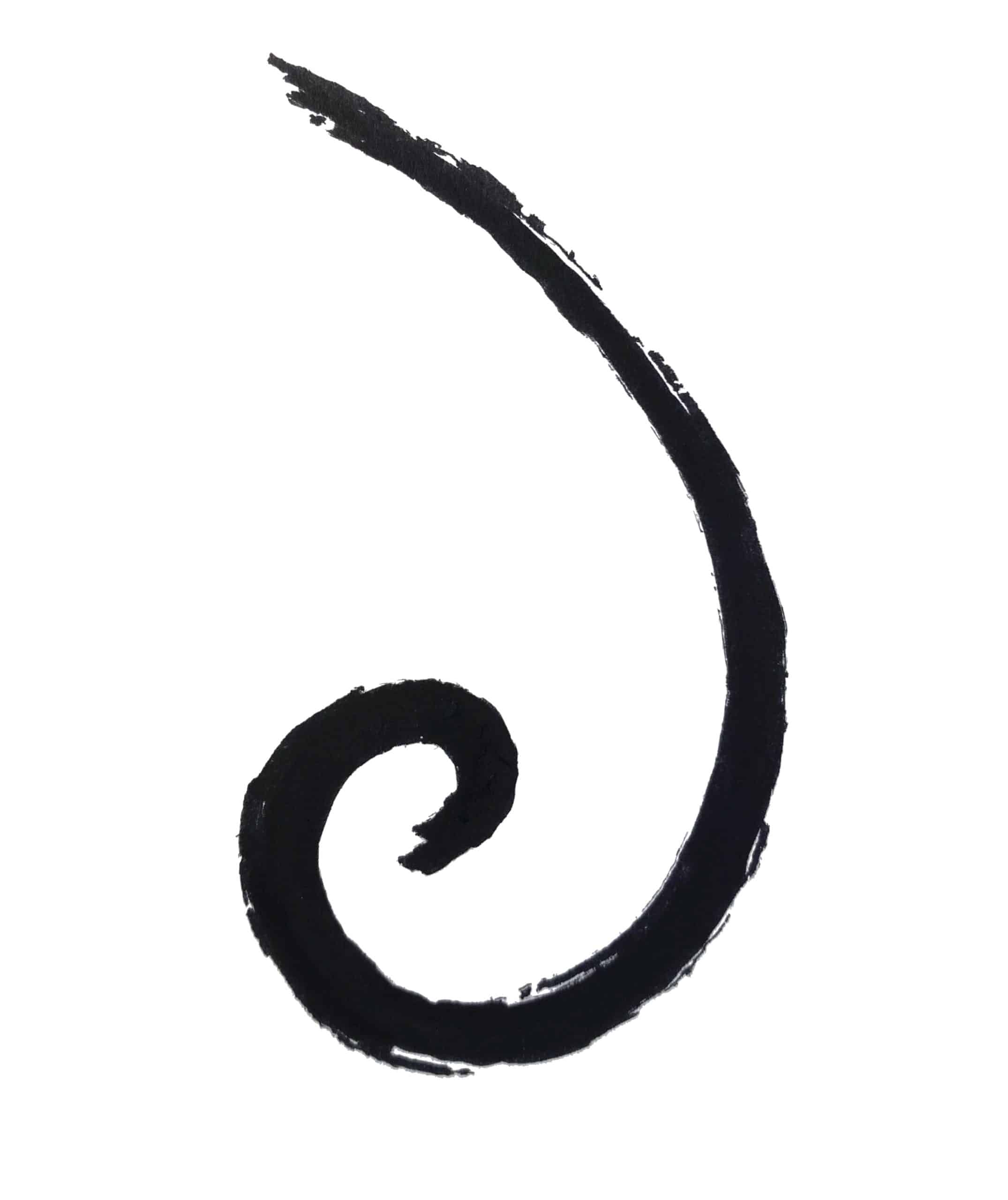Through deep experience, deep questioning and deep commitment emerges deep ecology
By Stephan Harding *
IN THE 1960s, HAVING read Rachel Carson’s book, Silent Spring, Arne Naess was moved to apply his formidable philosophical skills to understanding the ecological crisis and its resolution. Since becoming the youngest-ever professor of philosophy at the University of Oslo whilst still in his twenties, Arne Naess has revealed his brilliance by studying and writing extensively in many fields, including semantics, philosophy of science, and the works of Spinoza and Gandhi. But he is much more than an academic. His approach to ecology bears the stamp of his life’s experience as a philosopher in the truest sense — as a lover of wisdom, and as a lover of mountains. A key influence in his long life has been his deep relationship to Hallingskarvet mountain in central Norway, where, in 1937, he built a simple cabin at the place called Tvergastein (crossed stones).
To understand what Arne Naess means by deep ecology it helps to imagine this place: high up, totally isolated, with commanding views of landscape down below. There he lived looking out on that vast, wild, panorama, reading Gandhi or Spinoza and studying Sanskrit. In this inhospitable retreat, under snow and ice for most of the year, where only lichen and tiny alpine flowers grow, Arne Naess has spent a total of more than ten years, watching, climbing, thinking, writing, and adoring the mountain. It is at Tvergastein, with Arctic storms threatening to blow away his roof, that most of his important work in deep ecology has been done.
The word ”ecology” originates from the science of biology, where it is used to refer to the ways in which living things interact with each other and with their surroundings. For Arne Naess, ecological science, concerned with facts and logic alone, cannot answer ethical questions about how we should live. For this we need ecological wisdom. Deep ecology seeks to develop this by focussing on deep experience, deep questioning and deep commitment. These constitute an interconnected system. Each gives rise to and supports the other, whilst the entire system is, what Naess would call, an ecosophy: an evolving but consistent philosophy of being, thinking and acting in the world, that embodies ecological wisdom and harmony.

Mohamed Nohassi, Unsplash
DEEP EXPERIENCE is often what gets a person started along a deep ecological path. Aldo Leopold, in his book A Sand County Almanac, provides a striking example of this. For Leopold, the experience was of sufficient intensity to trigger a total reorientation in his life’s work as a wildlife manager and ecologist. In the 1920s he had been appointed by the us government to develop a rational, scientific policy for eradicating the wolf from the entire United States. The justification for this intervention was that wolves competed with sport hunters for deer, so that fewer wolves would mean more deer for the hunters.
As a wildlife manager of those times, Leopold adhered to the unquestioning belief that humans were superior to the rest of nature, and were thus morally justified in manipulating it as much as was required in order to maximize human welfare.
One morning, Leopold was out with some friends on a walk in the mountains. Being hunters, they carried their rifles with them, in case they got a chance to kill some wolves. It got around to lunch time, and they sat down on a cliff overlooking a turbulent river. Soon they saw what appeared to be some deer fording the torrent, but they soon realized that it was a pack of wolves. They took up their rifles and began to shoot excitedly into the pack, but with little accuracy. Eventually an old wolf was down by the side of the river, and Leopold rushed down to gloat at her death. What met him was a fierce green fire dying in the wolf’s eyes. He writes in a chapter entitled Thinking like a Mountain that: ”there was something new to me in those eyes, something known only to her and to the mountain. I thought that because fewer wolves meant more deer, that no wolves would mean hunter’s paradise. But after seeing the green fire die, I sensed that neither the wolf nor the mountain agreed with such a view.”
Perhaps it is possible to understand what Leopold means when he says that the wolf disagreed with such a view, but how could a lifeless, inert mountain possibly agree or disagree with anything? What could Leopold have meant by that? What had he experienced in that pivotal moment in his life? Clearly, he is using the word ”mountain” as a metaphor for the wild ecosystem in which the incident took place, the ecosystem as an entirety, as a living presence, with its deer, its wolves and other animals, its clouds, soils and streams. For the first time in his life he felt completely at one with this wide, ecological reality. He felt that it had a power to communicate its magnificence. He felt that it had its own life, its own history, and its own trajectory into the future. He experienced the ecosystem as a great being, dignified and valuable in itself. It must have been a moment of tremendous liberation and expansion of consciousness, of joy and energy– a truly spiritual or religious experience. His narrow, manipulative wildlife manager’s mind fell away. The mind which saw nature as a dead machine, there for human use, vanished. In its place was the pristine recognition of the vast being of living nature, of what we now call Gaia.
Notice that the experience was not looked for, expected or contrived. It happened spontaneously. Something in the dying eyes of the wolf reached beyond Leopold’s training and triggered a recognition of where he was. After this experience he saw the world differently, and went on to develop his land ethic, in which he stated that humans are not a superior species with the right to manage and control the rest of nature, but rather that humans are ”plain members of the biotic community”. He also penned his famous dictum: ”a thing is right when it tends to preserve the integrity, stability and beauty of the biotic community. It is wrong when it tends otherwise.”

Danielle Macinnes, Unsplash
Arne Naess emphasizes the importance of such spontaneous experience. A key aspect of these experiences is the perception of gestalts, or networks of relationships. We see that there are no isolated objects, but that objects are nodes in a vast web of interconnections. When such deep experience occurs, we feel a strong sense of wide identification with what we are sensing. This identification involves a heightened sense of empathy and an expansion of our concern with non-human life. We realize how dependent we are on the well-being of nature for our own physical and psychological well-being. As a consequence there arises a natural inclination to protect non- human life. Obligation and coercion to do so become unnecessary. We understand that other beings, ranging from microbes to multicellular life-forms to ecosystems and watersheds, to Gaia as a whole, are engaged in the process of unfolding their innate potentials. Naess calls this process self- realization.
For us humans, self-realization involves the development of wide identification in which the sense of self is no longer limited by the personal ego, but instead encompasses greater and greater wholes. Naess has called this expanded sense of self the ecological self. Since all beings strive in their own ways for self-realization, we recognize that all are endowed with intrinsic value, irrespective of any economic or other utilitarian value they may have for human ends. Our own human striving for self-realization is on an equal footing to the strivings of other beings. There is a fundamental equality between human and non-human life in principle. This ecocentric perspective contrasts with the anthropocentric view which ascribes intrinsic value only to humans, valuing nature only if it is useful to our own species.
THE NEW SENSE of belonging to an intelligent universe revealed by deep experience often leads to deep questioning, which helps to elaborate a coherent framework for elucidating fundamental beliefs, and for translating these beliefs into decisions, lifestyle and action. The emphasis on action is important. It is action that distinguishes deep ecology from other ecophilosophies. This is what makes deep ecology a movement as much as a philosophy. By deep questioning, an individual is articulating a total view of life which can guide his or her lifestyle choices.
In questioning society, one understands its underlying assumptions from an ecological point of view. One looks at the collective psychological origins of the ecological crisis, and the related crises of peace and social justice. One also looks deeply into the history of the West to find the roots of our pernicious anthropocentrism as it has manifested in our science, philosophy and economics. One tries to understand how the current drive for globalization of Western culture and of free trade leads to the devastation of both human culture and nature.
This deep questioning of the fundamental assumptions of our culture contrasts markedly with the mainstream shallow or reform approach. This tries to ensure the continuance of business as usual by advocating the ”greening” of business and industry by incorporating a range of measures such as pollution prevention and the protection of biodiversity due to its monetary value as medicine or its ability to regulate climate. Although deep ecology supporters often have no option but strategically to adopt a reform approach when working with the mainstream, their own deep questioning of society goes on in the background. This may subtly influence the people with whom they interact professionally.

Francisco Gonzalez, Unsplash
For deep questioning, Arne Naess has developed the four-level system depicted in the apron diagram. In this there is an integrated movement from the practical realm at Level 4 to the religious/philosophical realm at Level 1. Level 1 is concerned with uncovering a person’s ultimate premises or norms, from which all actions and attitudes spring. This is the level we reach if we keep asking ”why?” to everything a person says (rather like small children do) beginning at the realm of everyday life. Eventually, if the process has gone deep, we could make a statement which encapsulates our deepest intuitions about life based on deep experiences of wide identification. For example, a friend, having been asked the ”why?” question all day long, might finally be able to go no further than the statement, ”Nature is Sacred!” The ultimate norm of Arne Naess’s own ecosophy is: ”Self-Realization”. The deep experience which inspires Naess’s ecosophy is the sense of intrinsic value in the unfolding of life’s potential. The statements end with an exclamation mark. This denotes that we are dealing with norms — that is, with suggestions about how we should think or act.
Ultimate norms always belong to the philosophical or religious realm. And, being ultimate, they are not provable or derivable from other norms. Ultimate norms are not absolutes. They are guidelines for making wise decisions through the process of systematic reasoning from the most abstract realms of concrete consequences. Harold Glasser gives a good example of this process. Imagine that your local organic farmer has ”Live Richly!” as her ultimate norm. If you ask her to derive an implication of this for daily life, she might say something like: ”To live richly for me means being simple in means: that is, in my consumption of resources; but rich in ends, such as inherently wholesome relationships and experiences.” Here there is no exclamation mark, since this is not a norm, but is instead a conjecture about what might flow from the ultimate norm for this particular individual.
Because of their tentative nature, Arne Naess calls such statements hypotheses. From this hypothesis will flow a new norm, called a derived norm. Our farmer might phrase it as: ”Live Simply!” From this derived norm will flow another hypothesis. This new hypothesis could be something like: ”Efficient use of resources is a requirement for simplicity.” This in turn will give rise to a new, lower-level norm, such as ”Be efficient!”, which leads to the farmer deciding to recycle paper and other materials — a concrete consequence of the deep questioning process.
Someone else, a young stockbroker from the City of London, might have the same ultimate norm as our organic farmer, but in his case the derivational process ends up in a totally different concrete consequence. From the ultimate norm he derives the hypothesis: ”Lavishness is the key to richness,” which eventually leads down to the concrete consequence of conspicuous consumption.
Glasser’s example neatly shows how the same verbal expression of an ultimate norm can lead to vastly different ecological outcomes. However, he points out that ultimate norms which lead to ecologically harmonious action always incorporate the sense of wide identification. Ultimate norms can be very diverse. For example, a Buddhist and a Christian would disagree about the existence of God, but both would want to protect and nurture life. Thus there is a need for a set of basic views which can be broadly accepted by deep ecology supporters with widely divergent ultimate norms.
For this reason Arne Naess and George Sessions devised the deep ecology platform, also known as the eight points of the deep ecology movement. They constitute Level 2 of the apron, and are meant to act as a sort of filter for the deep questioning process. If you can largely agree with the platform statements, you fall within the umbrella of ”the deep ecology movement” and you can place yourself within the ranks of its supporters. The platform is not meant to be a rigid set of doctrinaire statements, but rather a set of discussion points, open to modification by people who broadly accept them. In fact, the version given here was modified from the original by participants attending a deep ecology course held at Schumacher College in 1995. Some deep ecology supporters regard the platform as the outline of a comprehensive ecosophy in its own right. Here Level 1 statements of wide identification are represented by the first three points, which incorporate the ultimate norm, ”Intrinsic Value!”. Points 4 to 7 are seen as a bridge between the ultimate norm and personal lifestyles, with point 8 relating specifically to concrete actions in the world.

Tom Seger, Unsplash
At Level 3 one has moved from consideration of general principles at Level 2 to an exploration of one’s own situation. What options are there for changing lifestyle and for activism in ways consistent with the upper levels of the apron? Our organic farmer was at Level 3 when exploring the options for recycling in her area. Perhaps our young stockbroker, having had a deep experience of wide identification whilst spending time alone in the bush during an otherwise hedonistic African safari holiday, makes a firm resolve to change his job. On returning to London, his Level 3 activity is to look around for ways of making a living consistent with his new insight and his range of skills. He contacts people, asks a lot of questions, hesitates, but finally decides to act. Now he is at Level 4, and when he finally settles into his new job as an ethical investment adviser using only public transport and his bicycle to visit his clients, he has completed the process by creating a lifestyle in which everyday decisions and actions relate directly to the ultimate level of his ecosophy.
Many different lifestyles and modes of action are possible at Level 4. Some people, like the social ecologists, will naturally try to focus on remedying the way in which injustice amongst humans leads to ecological breakdown. Others, the ecofeminists, will try to counter the contribution of gender imbalances to the ecological crisis. Others, the conservation biologists, will focus on ways of documenting and preventing the extinction of species which invariably follows from human- induced fragmentation of pristine nature. Yet others will oppose the negative impacts of free trade and globalization on nature and culture. Arne Naess stresses that the frontier is long within the deep ecology movement, and that we must understand and support approaches which are different from our own. This radical pluralism is thus an essential component of the deep ecology movement. When dealing with people who are not working along the long frontier of ecological action and who seek to undermine and undo such work, Arne Naess stresses the importance of Gandhi’s method of non-violence, in which a key point is not to lose respect for the fundamental humanity of one’s opponent.

Hannah Busing, Unsplash
FINALLY, WE COME TO deep commitment, which is the result of combining deep experience with deep questioning. When an ecological world-view is well developed, people act from their whole personality, giving rise to tremendous energy and commitment. Such actions are peaceful and democratic and will lead towards ecological sustainability. Uncovering the ecological self gives rise to joy, which gives rise to involvement, which in turn leads to wider identification, and hence to greater commitment. This leads to ”extending care to humans and deepening care for non-humans”.
* Stephan Harding is Deep Ecology Research Fellow and Senior Lecturer in Holistic Science at Schumacher College, Dartington, Devon UK
